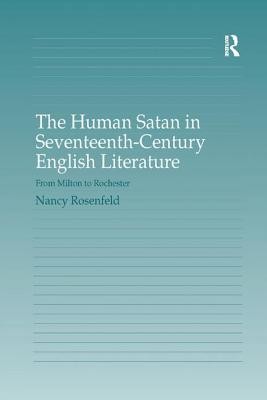
- We will send in 10–14 business days.
- Author: Nancy Rosenfeld
- Publisher: Routledge
- ISBN-10: 1138261890
- ISBN-13: 9781138261891
- Format: 15.6 x 23.4 x 1.2 cm, minkšti viršeliai
- Language: English
- SAVE -10% with code: EXTRA
The Human Satan in Seventeenth-Century English Literature (e-book) (used book) | bookbook.eu
Reviews
Description
Framed by an understanding that the very concept of what defines the human is often influenced by Renaissance and early modern texts, this book establishes the beginning of the literary development of the satanic form into a humanized form in the seventeenth century. This development is centered on characters and poetry of four seventeenth-century writers: the Satan character in John Milton's Paradise Lost and Paradise Regained, the Tempter in John Bunyan's Grace Abounding to the Chief of Sinners and Diabolus in Bunyan's The Holy War, the poetry of John Wilmot, earl of Rochester, and Dorimant in George Etherege's Man of Mode. The initial understanding of this development is through a sequential reading of Milton and Bunyan which examines the Satan character as an archetype-in-the-making, building upon each to work so that the character metamorphoses from a groveling serpent and fallen archangel to a humanized form embodying the human impulses necessary to commit evil. Rosenfeld then argues that this development continues in Restoration literature, showing that both Rochester and Etherege build upon their literary predecessors to develop the satanic figure towards greater humanity. Ultimately she demonstrates that these writers, taken collectively, have imbued Satan with the characteristics that define the human. This book includes as an epilogue a discussion of Samson in Milton's Samson Agonistes as a later seventeenth-century avatar of the humanized satanic form, providing an example for understanding a stock literary character in the light of early modern texts.
EXTRA 10 % discount with code: EXTRA
The promotion ends in 21d.21:12:47
The discount code is valid when purchasing from 10 €. Discounts do not stack.
- Author: Nancy Rosenfeld
- Publisher: Routledge
- ISBN-10: 1138261890
- ISBN-13: 9781138261891
- Format: 15.6 x 23.4 x 1.2 cm, minkšti viršeliai
- Language: English English
Framed by an understanding that the very concept of what defines the human is often influenced by Renaissance and early modern texts, this book establishes the beginning of the literary development of the satanic form into a humanized form in the seventeenth century. This development is centered on characters and poetry of four seventeenth-century writers: the Satan character in John Milton's Paradise Lost and Paradise Regained, the Tempter in John Bunyan's Grace Abounding to the Chief of Sinners and Diabolus in Bunyan's The Holy War, the poetry of John Wilmot, earl of Rochester, and Dorimant in George Etherege's Man of Mode. The initial understanding of this development is through a sequential reading of Milton and Bunyan which examines the Satan character as an archetype-in-the-making, building upon each to work so that the character metamorphoses from a groveling serpent and fallen archangel to a humanized form embodying the human impulses necessary to commit evil. Rosenfeld then argues that this development continues in Restoration literature, showing that both Rochester and Etherege build upon their literary predecessors to develop the satanic figure towards greater humanity. Ultimately she demonstrates that these writers, taken collectively, have imbued Satan with the characteristics that define the human. This book includes as an epilogue a discussion of Samson in Milton's Samson Agonistes as a later seventeenth-century avatar of the humanized satanic form, providing an example for understanding a stock literary character in the light of early modern texts.


Reviews